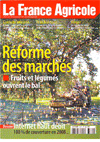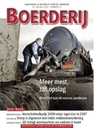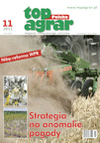CAP reform: What Europe thinks

Journalists from Farmers Weekly’s sister publications across Europe have summarised the reaction to proposals for Common Agricultural Policy reform in each of their countries.
Denmark
 Henrik Lisberg, Landbrugs Medierne
Henrik Lisberg, Landbrugs Medierne
“Generally, the proposals were relatively well received in Denmark. The agricultural sector had expected the re-distribution of funds from pillar one to pillar two to be more dramatic.
The reform will reduce direct payments to Danish farmers by approximately €50m, about 4% to 5%. On the other hand, Denmark only gets a very small share of the support for rural development, at the moment. A higher share of the EU pot will more or less equal the loss on the direct payments.
The increased environment demands in the direct payments are not expected to cause problems in Denmark, given our relatively strict regulations.
The political establishment that used to talk about a total phase-out of the support has been calm.
Discussion on further liberalisation seems to be dead.Internally, the most criticised aspect of the reform is the proposal for a flat rate system of payment. Danish dairy farmers receive a high proportion of direct payments. Approximately 20% is in milk support.Consequently, there has been strong opposition among dairy farmers, who consider the four-year transition period to be way too short.
France
 Arielle Delest, La France Agricole
Arielle Delest, La France Agricole
While the indications for reform, presented in November 2010, had raised hopes, French farmer unions are unhappy at the proposals.
All denounce a reform, formed by constrained finances. We await guarantees on the financial envelope.For all, the biggest black mark is the market management mechanisms. Farmers want intervention in markets.
The end of the sugar quota system and, perhaps, of the direct payment for suckler cows, is seen to be an error.
The greening obligation is also disappointing. Young farmers said it was not flexible enough as it would “not be applicable on all areas”.
Whereas it was deemed “too high” by the farm union, FNSEA.
The union said “it is not likely to improve competitiveness of production”.
A report for ‘La Coordination Rurale’ comments that other countries are not burdened with as many compulsory measures as France.
In contrast rural issues body La Confédération Paysanne denounces an apparent greening which they said “will not lead to any change of practice in 95% of the French territory”.
French farmers recognise the necessary transition from an historic payment system to a flat-rate area payment.
However, they remain divided over the transitional period. La Confédération Paysanne considers the five-year deadline too long.
But the FNSEA requires “time and an adapted rate”, implying that 2019 is too close a deadline.
Germany
 Alfons Deter, Top Agrar
Alfons Deter, Top Agrar
In Germany two big discussions started: (a) the greening and (b) the limitation of payment for big farms.
The president of the German farmers association (DBV), Gerd Sonnleitner, predicted that nearly six million hectares would be taken out of production.
”This is economical and ecological nonsense,” he said.
The lack of 30 million tonnes of grain per year fuels the debate of bioenergy-production versus food.
For him, 30% greening is only acceptable if the specifications for cross compliance are changed.
From the presented ideas, Ciolos Sonnleitner expects more bureaucracy.
He is against the limitation for larger farms and requires a greater variety in the greening options, allowing farmers to choose their measures.
The president of the farmers’ association in the Rhineland, Friedhelm Decker, said the commission needed to overhaul the proposal on ecological areas.
“At a time of rising prices for food, it’s absurd to take land out of production,” he said.
He is sure that EU agriculture commissioner Dacian Ciolos will change his opinion at a later stage of negotiations.
There is some conflict about the interpretation of commissioner Ciolos’ plans.
For example, while Herr Sonnleitner said that 7% will be completely taken out of production, other organisations say this is wrong.
The farmers only have to change their methods.
The president of the farmers’ association of Saxonia, Wolfgang Vogel, is angry about the capping limit on support payments €300,000 a head.
Commissioner Ciolos does not understand that the large farms in eastern Germany provide work to many families.
Also, there is too much bureaucracy and the greening with 7% closedown is not a good sign for the future, where more agricultural land is needed.
German sugar producers are appalled at the announcement that quotas for sugar beet will end in 2015.
This would mean that the price will go under €25 per tonne and bring farmers into dire straits. They want the continuation of the current sugar regime.Reaction among German politicians varies from “too much change” (Conservatives) to “not enough greening and restriction of the agricultural industry” (Green parties).
Minister Ilse Aigner has reserved her reaction.
At the moment, she seems to be on the side of the farmers, who are mostly voters for her CDU/CSU-party.
Newspaper SÏddeutsche Zeitung argues that the Ciolos proposals are a big compromise.
“For no side, the plans are optimal, but every group can find good aspects. No one wins.
But this could be the best way for Ciolos to turn the ideas into law.
Extreme ideas to one or another side would be doomed to failure.”
Netherlands
 Leo Tholhuijsen, Boerderij
Leo Tholhuijsen, Boerderij
The main farmers’ organisation in the Netherlands, LTO Nederland, was disappointed with the proposals from Commissioner Ciolos.
According to LTO president Albert Jan Maat, the proposals “have insufficient contact with modern Dutch agriculture and horticulture”.
He said that set aside of arable land and the minimum number of crops would lead to extensification.
Through that, the next CAP will drift away from the efficient and market focused way in which agriculture is practised in most western European countries.
A smaller organisation of arable farmers (NAV) sees flat rate and the end of milk quota as a disadvantage for arable farmers. NMV, representing dairy farmers, is disappointed that producer organisations are not being allowed to set milk prices and volumes.
What elements of the proposals are generating the most reaction? Intensive dairy farms, farms with veal production and growers of starch potatoes will suffer most from the implementation of a flat rate payment in Holland.
Based on an actual base rate of €440 per hectare, LTO Nederland estimates an income loss for individual dairy farmers of between €6,000 (less intensive) and €18,000 (intensive).
The Dutch state secretary of agriculture Henk Bleker criticised the reform proposals. He thinks that the cut of 8% for the Netherlands is “unacceptably high”. Mr Bleker sought real incentives for innovation and is critical of the way Ciolos wants to promote greening of agriculture.
Bleker said: ”The proposal is a beginning, but it has to be much better.”
Poland
 Karol Bujoczek, Top Agrar Polska
Karol Bujoczek, Top Agrar Polska
Wiktor Szmulewicz, president of the national council of agricultural chambers, said: ”We are deeply disappointed by this proposal, which is contrary to the expectations of Polish farmers.
We had hoped that the new CAP would be less administratively burdensome for farmers, and the differences in direct payments between member countries would be significantly offset.”
He added: ”The legislative package presented by the c;ommission is not a real reform, but only contains minor cosmetic changes, which serve only to maintain the current distribution of European funds for agriculture.
Moreover, instead of simplifying the European agricultural policy, this proposal contains a number of new administrative burdens and it makes the CAP even more complicated than it is now.
The greening proposal has produced a lot of controversy, as it will require multiple inspections.
“The Polish ministry of agriculture has evaluated the most important aspects of proposed reform, with some general conclusions:
Positive aspects:
• Improvement in direct support distribution between farmers – progressive reduction and capping of the payment.
• Special rules for small farms
• Wider range of measures available under CAP, especially risk management measures, and support for producer organisations.
Possibility of additional support for areas with natural constraints in Pillar 1.
• Simplification of cross-compliance requirements.
• Possibility of coupled payments for some important products.
Negative aspects:
• Proposed reform introducing a new objective for CAP without increasing the budget.
• It only partly reduces the differences in the level of direct support in member states.
It makes the CAP more complicated than it is now.It establishes a new system for direct payment, and it is based on payment entitlements, which is completely different to the current SAPS system in some member states. For Poland it means a difficult change between those systems.Greening not bring expected effects for natural environment, but will only complicate the direct payment system.
Czech Republic
Martin Sedlácˇek, Zemedelec
The Reform Proposal is very extensive thereby making it imposible to deal with all its aspects.
Nevertheless, Czech farmers´ organisations as well as the farm ministry and the politicians have been disappointed with the main points of the proposal .
It is possible to say that:
• In principle, they all disagree with the capping of payments for large farms
• Although the money acquired from the limited payments to large farms will be allowed to be transferred into the second pillar it presupposes co-financing. This is a problem at the time of tight budgets
• The suggested transition to flat rate payments by 2019 is considered very slow and it further counts with substantial differences between the member states.
• We do not consider it wise to set aside 7% of the farmland when even the EU speaks about food security while supporting biofuels production. We wish to note that the compulsory set aside was lifted in recent years at the time of grain shortage
• The proposal does not support the EU competitiveness with third countries, on the contrary it is a restraint.
Visit our special report on CAP reform
Have your say on the plans to reform the CAP
